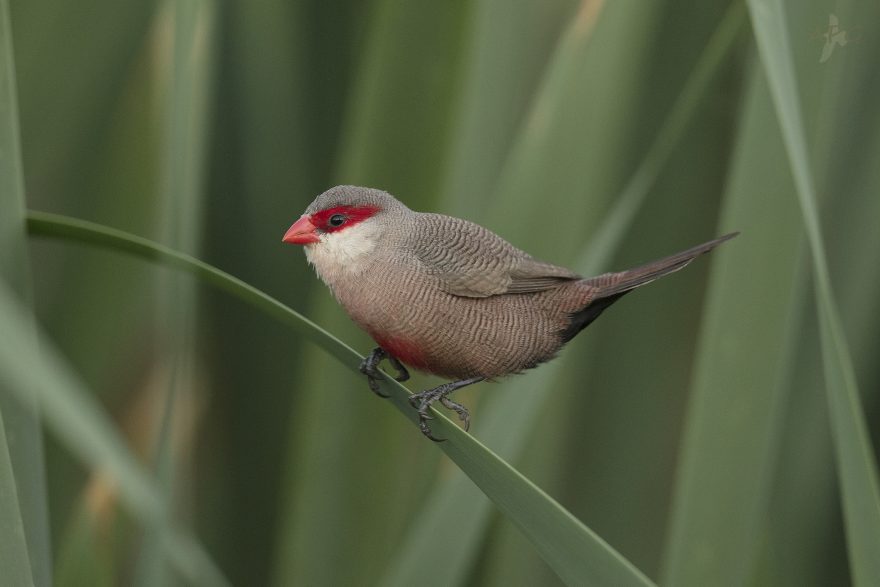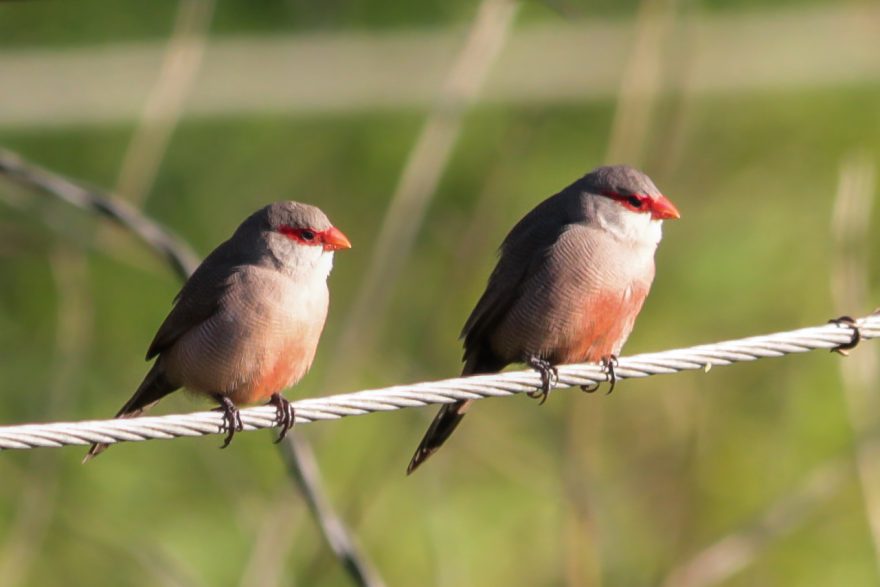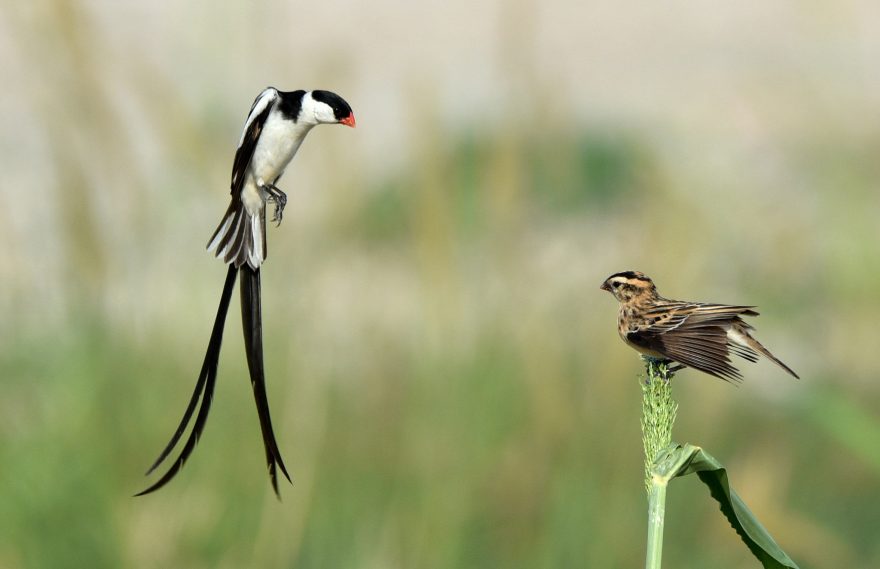The St. Helena Waxbill is a small estrildid finch native to sub-Saharan Africa. They are commonly kept in aviculture throughout the world, though some of their popularity can be attributed to their willingness to raise young pin-tailed whydahs. There are several different sub-species available, plus a small variety of established colour mutations. In regions without an influx of wild-caught birds, pure strains of St Helena waxbills can be difficult to acquire due to cross breeding.

Housing & Compatibility
St. Helena waxbills are best suited to a large planted aviary. They have a slight preference for natural nesting sites, so an aviary with dense shrubs or grasses planted at ground level is ideal.
Wild St. Helena waxbills live in small flocks and roost communally. Best results are achieved when this preference is replicated in the aviary. They can also be housed with most other placid finch species, small doves, quail and Neophema parrots.
Although considered to be a placid species, St. Helenas may become defensive of their nesting area during the breeding season. Because of their active and gregarious nature, they may disturb other species housed in the same aviary. The best solution to this problem is to house them in large, sparsely populated aviaries with many different nesting locations.
Diet & Feeding
A quality seed mix including canary seed, various millets and panicum forms the basis of the St Helenas diet. Seed is lacking in many essential vitamins and minerals which must be compensated for by introducing other foods. Sprouted seed increases the nutritional value of seed and is a cheap way to improve your birds health. Freshly grown green seed heads should also be offered frequently.
Leafy greens such as kale, bok choy, endive and silverbeet are in important part of the St Helenas diet. Spinach can also be given, but only sparingly as it can contribute to calcium deficiency. They don’t typically consume fruit, however they may learn to eat it from observing other finches in the aviary.
Live food is an important component of the St Helenas diet. Mealworms, maggots, termites, and small crickets will be consumed readily. Commercial soft finch food mixes can also be provided for an added nutrient boost, which is particularly useful during the breeding season.
Do not feed anything from the list of forbidden foods.

Breeding
St Helena waxbills are generally reliable breeders and will breed from spring through to autumn in their second year. They will construct an elaborate grass nest about 2-3 feet above ground level in dense shrub, brush, or half-open nest box. The hen will lay 3-6 eggs which will be incubated by both parents for approximately two weeks. Young birds will fledge at approximately three weeks of age and become fully independent within a month.
It is safe to leave young birds with their parents, but telling them apart can quickly become difficult unless leg rings are used.
Allowing pairs to produce more than 3-4 clutches will greatly reduce the health and longevity of your birds. Steps should be taken to prevent birds from breeding in the hottest or coldest months. Male and female St Helenas can be housed apart during the non-breeding seasons and re-paired with little trouble.
Mutations
At least four St Helena mutations have been established. These include fawn, white, pied (white splotches), and yellow (which replaces all red).
Parasitism by the Pin-tailed whydah

The Pin-tailed whydah (Vidua macroura) will place 2-4 eggs into the nests of St Helenas. The St Helena will hatch and raise these eggs as their own, in addition to their own young which are usually undisturbed by the intrusion of the whydah chicks. It is recommended to run multiple pairs of St Helenas with a single pair of whydahs to increase the likelihood that there is an active nest available when the whydahs are ready to breed. Furthermore, running multiple pairs allows the whydahs to distribute their eggs between multiple nests, which reduces the workload of the St Helena hens.
Health
A strict worming and parasite control regime is essential to ensure the long-term health of any finch collection. A healthy St Helena Waxbill should live for 6-7 years.